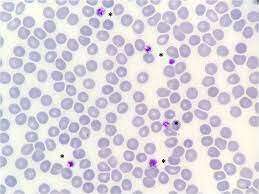Bernard Soulier Disease

Bernard Soulier Disease
Contact Us
Related Videos :
Frequently Asked Questions (FAQ) :
While it can be severe, with appropriate management and treatment, most patients can lead a normal life. However, untreated bleeding episodes can be dangerous.
There is currently no cure for Bernard-Soulier Disease, but treatments are available to manage symptoms and reduce bleeding risks.
Avoiding medications that increase bleeding risk, practicing good dental hygiene to avoid gum bleeding, and seeking immediate medical help during injuries can help manage the condition.

About Bernard-Soulier Disease
Bernard-Soulier Disease (BSS) is a rare, inherited bleeding disorder characterized by large platelets and a low platelet count (thrombocytopenia). This condition affects the blood’s ability to clot properly, leading to excessive bleeding and easy bruising. Named after Drs. Jean Bernard and Jean-Pierre Soulier, this disorder requires specialized care to manage its symptoms effectively.
Causes of Bernard-Soulier Disease
Bernard-Soulier Disease is caused by a genetic mutation that affects the GPIb-IX-V complex on the surface of platelets. This complex plays a crucial role in platelet adhesion during the blood clotting process. Since BSS is inherited, individuals with this disease have two faulty copies of the gene (one from each parent). If both parents are carriers, there’s a 25% chance their child will inherit the disease.
Types of Bernard-Soulier Disease
There are three main types of Bernard-Soulier Disease:
- Classic Bernard-Soulier Syndrome: The most severe form, where individuals have very low platelet counts and significant bleeding issues.
- Variant Bernard-Soulier Syndrome: In this type, the platelets may function partially, resulting in milder symptoms.
- Pseudo Bernard-Soulier Syndrome: A less common variant, where platelets appear normal but do not function correctly in clot formation.
Symptoms of Bernard-Soulier Disease
People with Bernard-Soulier Disease may experience a variety of symptoms, including:
- Frequent nosebleeds (epistaxis)
- Easy bruising
- Heavy menstrual periods in women (menorrhagia)
- Bleeding gums
- Prolonged bleeding after injury or surgery
- Small, red or purple spots under the skin (petechiae)
Diagnosis of Bernard-Soulier Disease
Diagnosis of Bernard-Soulier Disease typically involves a combination of clinical examination, family history, and specialized blood tests. The most common diagnostic methods include:
- Complete Blood Count (CBC): To check platelet count and size.
- Flow Cytometry: To assess platelet function and the presence of the GPIb-IX-V complex.
- Platelet Aggregation Tests: These tests evaluate how well platelets clump together in response to clotting factors.
- Genetic Testing: Helps confirm the diagnosis by identifying the specific gene mutation responsible for BSS.
Treatment of Bernard-Soulier Disease
Currently, there is no cure for Bernard-Soulier Disease, but various treatment options help manage symptoms and reduce the risk of bleeding:
- Platelet Transfusions: Used during surgeries or in cases of severe bleeding.
- Desmopressin (DDAVP): A medication that stimulates the release of clotting factors.
- Antifibrinolytic Therapy: Drugs like tranexamic acid help prevent the breakdown of blood clots.
- Avoiding Certain Medications: Aspirin and nonsteroidal anti-inflammatory drugs (NSAIDs) should be avoided, as they can worsen bleeding.
Cost of Treatment and Stay in India
Lorem ipsum dolor sit amet, consectetur adipiscing elit. Ut elit tellus, luctus nec ullamcorper mattis, pulvinar dapibus leo.